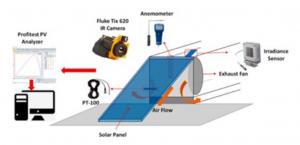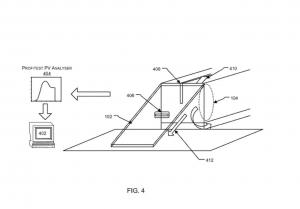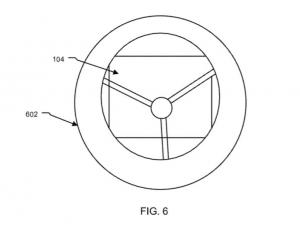New cooling system patent promises significant boost in solar panel efficiency

The experimental setup for the new invention is designed to enhance the power-generating capacity of solar panels. Credit: Prof. Chaouki Ghenai

Schematic of experimental setup and Experimental prototype: (A) Standard exhaust, (B) Exhaust without fins, (C) Solar PV Panel with back cooling from exhaust air, (D) Reference Solar PV Panel without cooling. Credit: Prof. Chaouki Ghenai

The system includes an exhaust fan connected to the outlet of a central air conditioning module. Credit: https://patents.google.com/patent/US12341471B2/en
Scientists have developed a new cooling device that can significantly enhance electricity generation in solar power systems.
SHARJAH, EMIRATE OF SHARJAH, UNITED ARAB EMIRATES, August 6, 2025 /EINPresswire.com/ -- Scientists at the University of Sharjah have secured a U.S. patent (US12341471B2) for an innovative cooling system designed to enhance the performance of solar photovoltaic (PV) panels. (https://patents.google.com/patent/US12341471B2/en)
The researchers claim that their invention can significantly reduce energy losses caused by high operating temperatures—an issue that plagues solar power systems, particularly in hot climates.
The patented system focuses on thermal management in solar PV modules. It is specifically engineered to utilize the hot waste air expelled by centralized air conditioning systems to cool the rear surfaces of solar panels.
The dual-purpose approach not only addresses excess heat but also repurposes waste energy that would otherwise be lost.
“This novel cooling technology will help reduce the operating temperature of solar panels, boost the power output, and improve solar PV module efficiency,” said Chaouki Ghenai, Professor of Sustainable and Renewable Energy Engineering at Sharjah University, and the lead inventor.
“This invention not only recovers lost power output in hot and arid settings, but also extends the life of assets, and makes it possible to implement new hybrid systems, which collectively reduce the levelized cost of energy and improve overall solar plant efficiency.”
Solar panels generate electricity through the photovoltaic effect, where light striking the surface of semiconductor-based solar cells is converted into electrical energy.
However, not all absorbed sunlight is converted—much of it becomes heat, raising the panel’s temperature and reducing its efficiency.
In their patent application, the inventors highlight that irradiance and temperature are critical environmental factors affecting solar panel performance.
They write, “The solar cell absorbs sunlight, and a partial amount of light is converted to electrical energy, while the remaining portion generates heat and increases the temperature.”
According to the researchers, current solar energy systems face two major challenges: (1) Thermal degradation, where rising temperatures reduce energy output, and (2) soiling, the accumulation of dust and debris, especially in arid and high-temperature regions.
They also cite optical and ohmic losses as additional factors that hinder solar cell efficiency.
Prof. Ghenai attributes a range of advantages to the invention, especially in hot and arid regions. “In hot, desert regions with abundant solar resources but high ambient temperatures, solar PV cooling is necessary to maximize electrical energy generation, asset health and longevity, and reduce soiling and maintenance.
“In hot and dry climates, solar PV panels can be cooled using the exhaust air from the building's Heating, Ventilation, and Air Conditioning (HVAC) system. This reduces the temperature of the solar cells, recovers up to 10% more solar power production, and extends the life of the panels.”
However, the researchers emphasize in their application that thermal effects are the most significant, stating, “Among all system losses, the thermal effect is the most contributing factor in the deterioration of the performance of the solar system. As the temperature rises from standard testing conditions (STC), the output of SPV panels degrades accordingly.”
In some regions, solar panels operate at temperatures as high as 70°C, which can result in up to a 20% loss in energy output, they note.
The inventors maintain that even a 1°C increase in operating temperature typically causes a 0.45% drop in relative efficiency, a metric known as the temperature coefficient of power. Moreover, every 10°C rise is expected to double the degradation rate of the solar system.
To combat this, the team developed their present cooling device that directs waste air from air conditioning systems toward the back of solar panels.
Prof. Ghenai said the invention has real-world applications to enhance current solar energy systems. “ An attractive smart-building retrofit is created when owners are able to capture incremental solar revenue, reduce total building energy consumption, and lengthen asset lifetimes.
“This is accomplished by completing the thermal loop, which involves converting waste building exhaust into a free cooling source for photovoltaics (PV). This will help to boost solar yield and reduce building cooling loads.”
The patent has already attracted considerable interest from industry, according to Prof. Ghenai. He noted that several companies in HVAC, building energy management, and solar PV sectors have expressed interest in integrating waste air from HVAC systems to cool solar PV modules.
He emphasized that the invention could significantly boost solar power output to meet building electrical loads, reduce the burden on chillers, and extend the lifespan of solar modules.
The system includes an exhaust fan connected to the outlet of a central air conditioning module.
It has a supporting structure positioned at a predefined distance in front of the fan to hold one or more solar panels, as well as panels tilted at specific angles and azimuths to maximize exposure of their rear surfaces to the cooling airflow.
The fan is calibrated to deliver air at a predefined temperature, optimizing the cooling effect and improving overall system efficiency.
The inventors conclude, “An effective solar panel cooling methodology and maintenance policy are essential to improve power system efficiency and reliability.”
Prof. Ghenai and his team are currently advancing innovative research in clean energy technologies. Their work includes harvesting waste air from HVAC systems to power wind turbines for renewable electricity generation, developing hybrid solar PV/wind turbine systems, creating novel methods for dust removal and solar PV cleaning in arid regions, and designing solutions to enhance green hydrogen production.
LEON BARKHO
University Of Sharjah
+971 50 165 4376
email us here
Legal Disclaimer:
EIN Presswire provides this news content "as is" without warranty of any kind. We do not accept any responsibility or liability for the accuracy, content, images, videos, licenses, completeness, legality, or reliability of the information contained in this article. If you have any complaints or copyright issues related to this article, kindly contact the author above.


